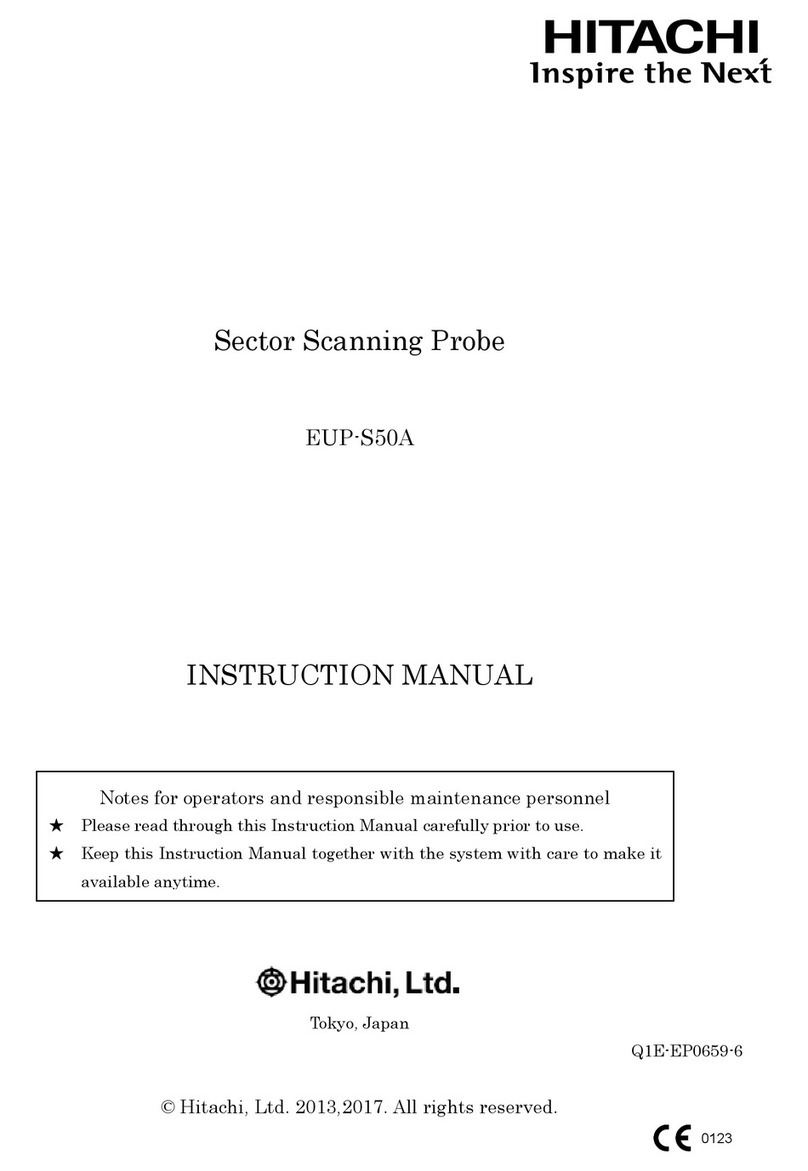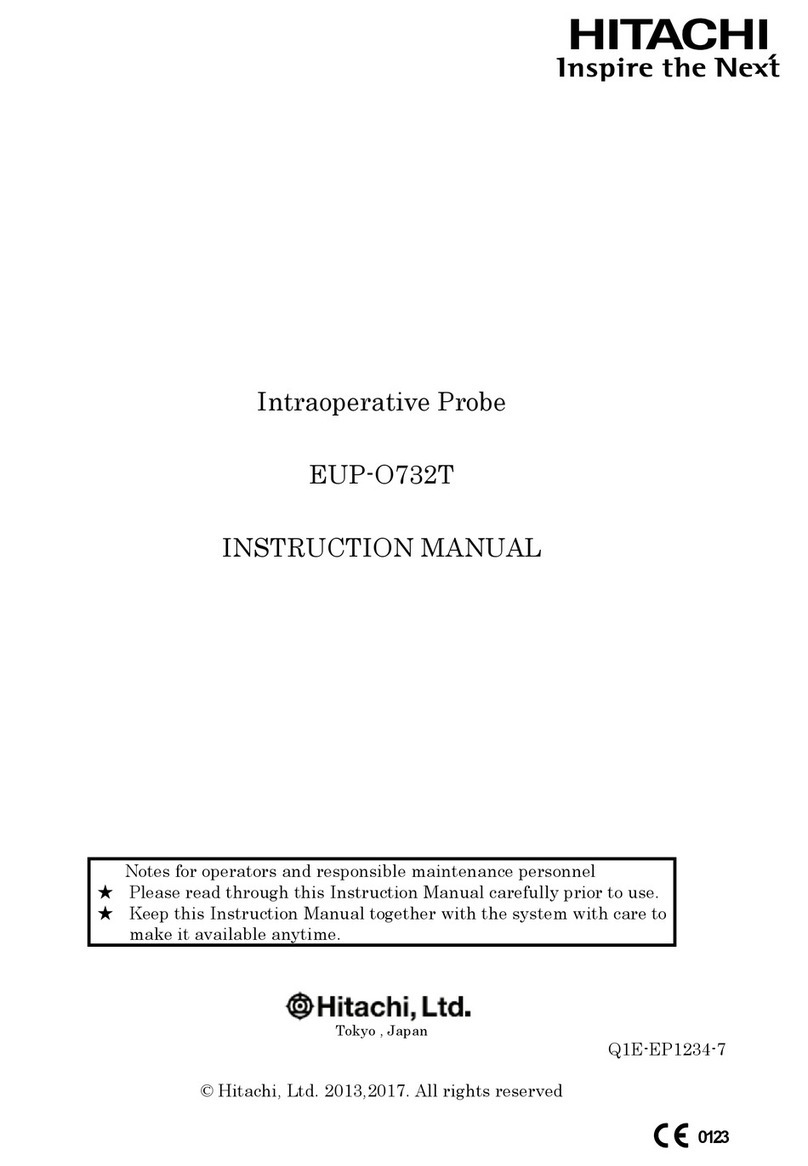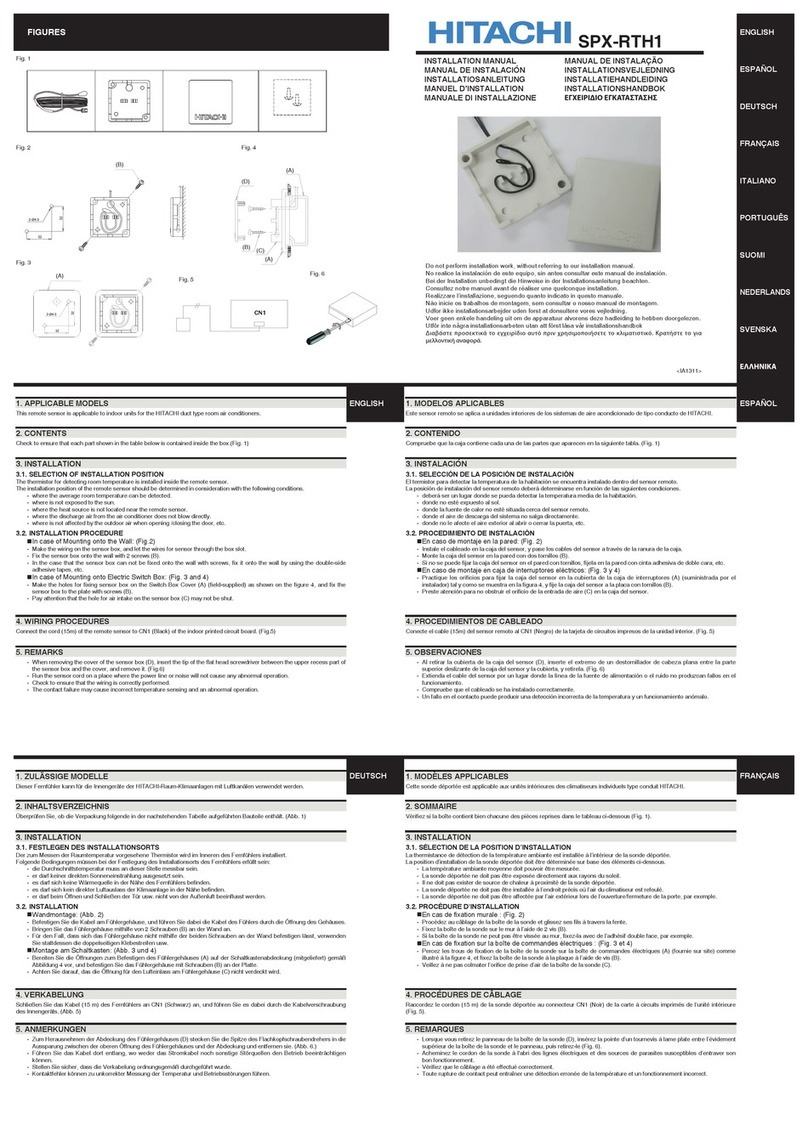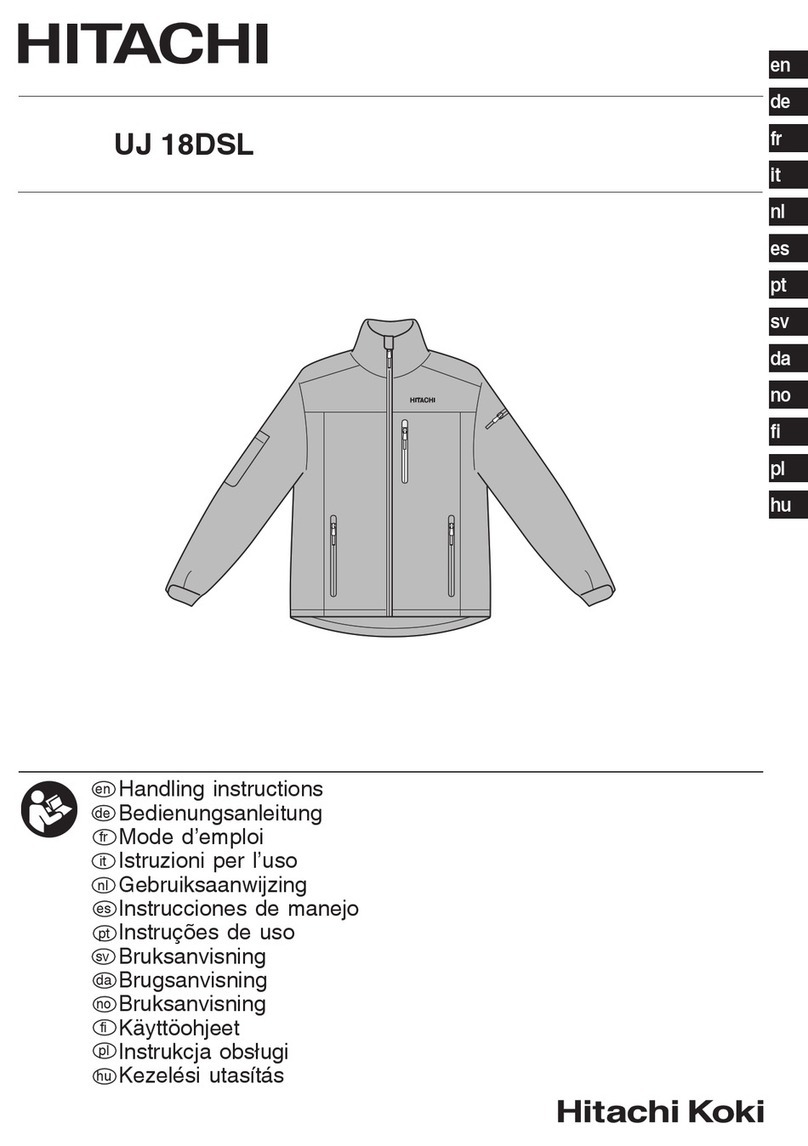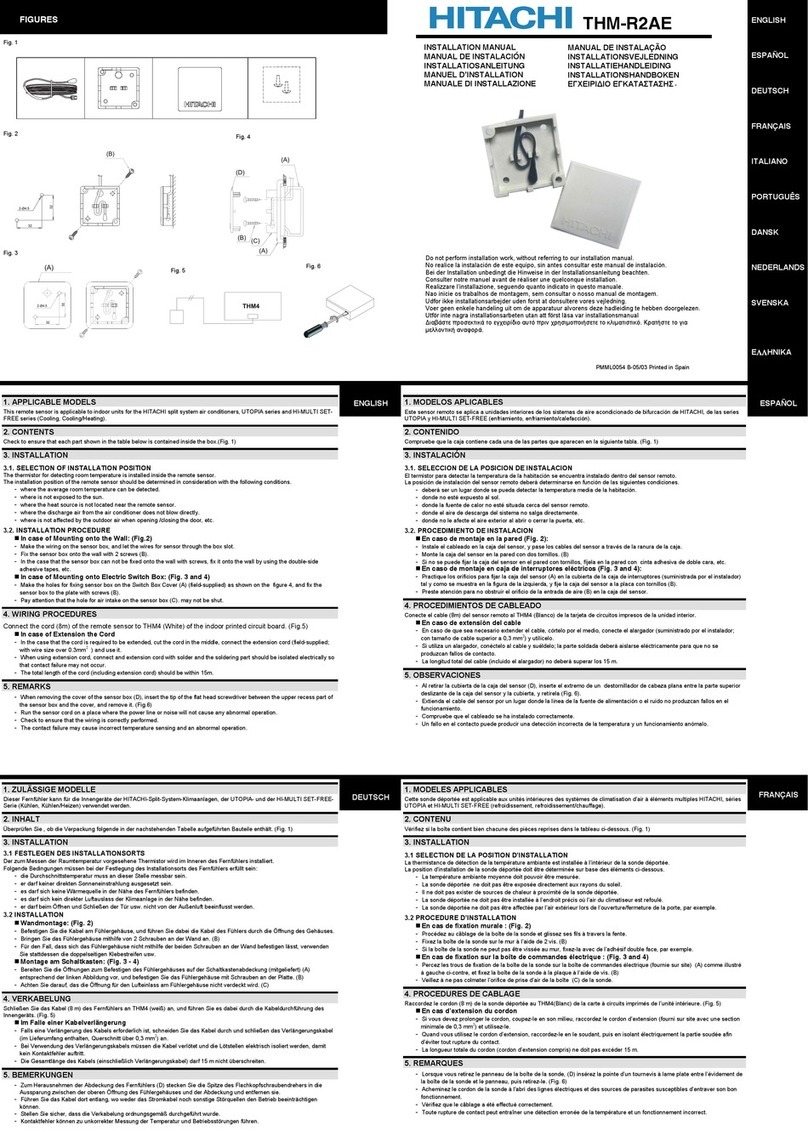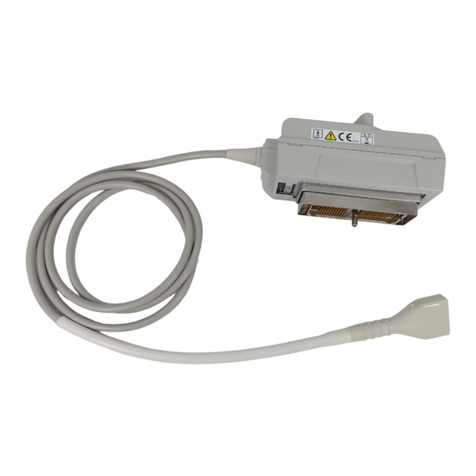
-4-
MN1-5531 Rev. 10
1-2-2. Precautions when using the probe in neurosurgery applications
Warning
When using this probe in neurosurgery applications, attach our recommended transducer cover to
the probe. Failure to properly use the transducer cover may cause harm to the patient.
Use our recommended transducer cover.
If you use a transducer cover which is not recommended by our company, it may cause harm to the
patient due to tearing or pyrogen.
Do not use the transducer cover attached to CIVCO biopsy needle guide as a standard in neurosur-
gery application.
Verify that the transducer cover packaging has not been opened or damaged.
If you use a contaminated transducer cover, it may cause patient infection although our recom-
mended transducer cover is sterilized.
Verify that there is nothing wrong with the transducer cover.
Store the transducer cover according to its instruction. Do not use the transducer cover if the expira-
tion date has passed, if it is discolored, or if there is visible damage, such as a tear.
Take precaution in handling the transducer cover so as not to break it as this may then result in
direct contact with the edge of bone during a craniotomy.
If the transducer cover breaks, it may cause harm to the patient.
Verify that there is nothing wrong with the transducer cover and that the puncture adapter is
properly attached on the transducer when puncturing.
If you attach the puncture adapter incorrectly, it may come off during the procedure, or it may be
punctured into a non intended area. Refer to the details on Section 4-5-3 “How to puncture using
MP-2458” and Section 4-5-5 “How to puncture using CIVCO bracket”.
Properly use the transducer cover and puncture needle according to this instruction.
If used incorrectly, it may cause patient or user injury.
Verify that the probe is sterilized. Use the sterilized echo jelly attached to our recommended
transducer cover as the acoustic medium.
If you use contaminated ones, it may cause patient infection.
Concerning CIVCO products, follow the guidelines sterilization of CIVCO.
Verify that there are no bubbles of the acoustic medium inside of the transducer cover.
If there are bubbles inside the transducer cover, they may cause clinical images changed and
erroneous display on the monitor leading to misdiagnosis.
When removing the transducer cover, do not pull it forcibly.
If you use excessive force, it may cause probe damage or scattering of contaminated material.
Do not reuse the transducer cover.
If you reuse the transducer cover, it may cause patient infection.
Caution
When disposing the transducer cover, take appropriate measures for prevention of infection.
If you dispose it improperly, it may cause environmental damage.
